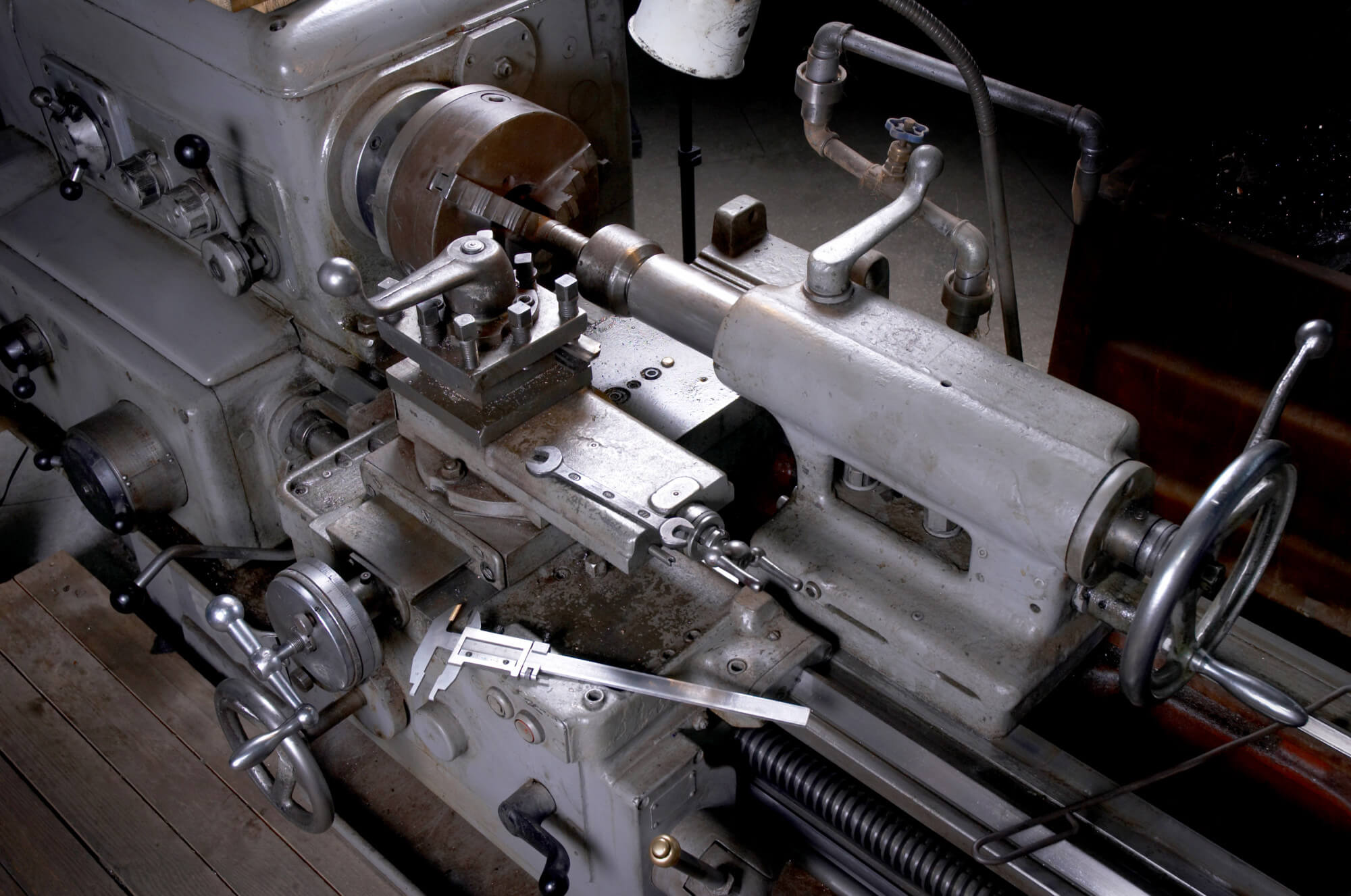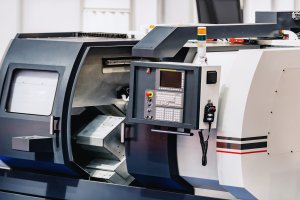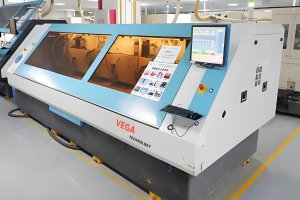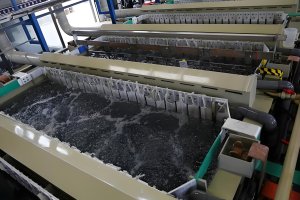Introduction to PMCRLF and Its Relevance in CNC Machining
In the rapidly evolving world of manufacturing, materials that combine high strength with lightweight properties are in constant demand. One such material is the long fiber-reinforced polymer matrix composite (PMCRLF). PMCRLF stands out due to its excellent strength-to-weight ratio, high specific stiffness, and remarkable mechanical properties. However, these advantages come with challenges, especially in machining processes like CNC machining. Due to its anisotropic and heterogeneous nature, PMCRLF is notoriously difficult to machine, often resulting in surface defects such as delamination, cracking, and fiber pull-out.
For customers purchasing non-standard PMCRLF parts, understanding the complexities of CNC machining on this material is crucial. This article delves into the challenges faced during CNC machining of PMCRLF, with a focus on surface roughness and subsurface damage, and provides insights into optimizing the machining process for better outcomes.
Understanding PMCRLF: Composition and Properties
What is PMCRLF?
PMCRLF, or long fiber-reinforced polymer matrix composite, consists of long fibers embedded in a polymer matrix. The fibers provide reinforcement, enhancing the mechanical properties of the composite, while the polymer matrix holds the fibers together and transfers loads between them. The most common fibers used are carbon and glass, while the polymer matrix is often epoxy, polyester, or thermoplastics.
Key Properties of PMCRLF
- High Strength-to-Weight Ratio: PMCRLF composites are lightweight yet exhibit high tensile strength, making them ideal for aerospace, automotive, and sports equipment applications.
- Anisotropy: PMCRLF exhibits different mechanical properties in different directions, depending on the fiber orientation. This anisotropy, while beneficial in some applications, complicates the machining process.
- Heterogeneity: The combination of different materials (fibers and matrix) results in heterogeneous properties, which can lead to uneven wear and tear during machining.
Challenges in Machining PMCRLF
The very properties that make PMCRLF desirable—its strength, lightweight nature, and anisotropy—also make it difficult to machine. Traditional machining methods can cause defects such as:
- Delamination: Layers of the composite separate, leading to a weakened structure.
- Cracking: Cracks can develop due to the brittle nature of the fibers.
- Fiber Pull-Out: Fibers can be pulled out of the matrix, resulting in a rough surface and reduced material integrity.
Understanding these challenges is the first step in optimizing CNC machining processes for PMCRLF.
CNC Machining of PMCRLF: Key Considerations
The Importance of Fiber Orientation
One of the most critical factors in CNC machining of PMCRLF is the orientation of the fibers. The angle at which the cutting tool interacts with the fibers significantly affects the surface finish and the likelihood of defects.
- Fiber Orientation Angle (θ): Defined as the angle between the cutting direction and the fiber direction, θ influences the cutting forces and the resulting surface quality.
- Critical Angle (θc): Studies have shown that when θ approaches 90°, the likelihood of surface defects such as delamination and fiber pull-out increases. Conversely, machining at lower angles (θ < 90°) tends to produce smoother surfaces with fewer defects.
The Role of Cutting Parameters
Cutting parameters such as tool geometry, cutting speed, feed rate, and depth of cut play a crucial role in determining the quality of the machined surface.
- Tool Geometry: The rake angle and clearance angle of the cutting tool are critical. For PMCRLF, a positive rake angle generally reduces cutting forces and improves surface finish. However, an excessively sharp rake angle can increase the risk of fiber pull-out.
- Cutting Speed: Higher cutting speeds can lead to increased temperatures, potentially causing matrix degradation and surface roughness. Optimizing cutting speed is essential to balance material removal rate and surface quality.
- Feed Rate: A higher feed rate may increase productivity but can also lead to greater surface roughness and subsurface damage. A lower feed rate is typically recommended for PMCRLF to minimize these issues.
- Depth of Cut: The depth of cut should be carefully controlled, especially when machining near the critical fiber orientation angle (θc). Excessive depth can exacerbate delamination and fiber pull-out.
Influence of Curing Conditions
The curing process of PMCRLF, which involves heating and pressure to solidify the polymer matrix, has a significant impact on the material’s machinability.
- Standard Curing: Produces a fully cured material with optimal mechanical properties, resulting in better surface finish during machining.
- Under-Curing: Results in a softer material that may be easier to machine but is more prone to defects like fiber pull-out and matrix cracking.
- Over-Curing: Leads to a harder, more brittle material that can increase the risk of delamination and surface cracking during machining.
Surface Roughness in PMCRLF CNC Machining
Defining Surface Roughness
Surface roughness refers to the texture of the machined surface, characterized by the presence of peaks and valleys. In CNC machining of PMCRLF, surface roughness is influenced by several factors, including fiber orientation, cutting parameters, and tool wear.
Measuring Surface Roughness
Surface roughness in PMCRLF machining is typically measured using a surface profilometer, which quantifies the deviations from an ideal smooth surface. Common metrics include:
- Ra (Arithmetic Mean Roughness): The average deviation of the surface profile from the mean line.
- Rz (Maximum Height of the Profile): The difference between the highest peak and the lowest valley within a sampling length.
Factors Affecting Surface Roughness
- Fiber Orientation: As discussed earlier, fiber orientation has a significant impact on surface roughness. Machining perpendicular to the fibers (θ ≈ 90°) often results in higher roughness due to fiber pull-out and delamination.
- Cutting Speed and Feed Rate: Higher cutting speeds and feed rates tend to increase surface roughness. However, these parameters must be optimized to balance productivity and surface quality.
- Tool Wear: As the cutting tool wears down, surface roughness typically increases. Regular tool maintenance and replacement are crucial to maintaining surface quality.
Techniques to Improve Surface Roughness
- Optimizing Cutting Parameters: Adjusting cutting speed, feed rate, and depth of cut to minimize surface roughness without compromising productivity.
- Using Sharp Tools: Maintaining sharp cutting tools with the appropriate rake angle can significantly reduce surface roughness.
- CNC Programming Strategies: Implementing advanced CNC programming techniques, such as trochoidal milling, can help distribute cutting forces more evenly and reduce surface roughness.
Subsurface Damage in PMCRLF CNC Machining
Understanding Subsurface Damage
Subsurface damage refers to the microstructural alterations that occur beneath the machined surface, often invisible to the naked eye. In PMCRLF machining, subsurface damage can include matrix cracking, fiber-matrix debonding, and fiber breakage.
Causes of Subsurface Damage
- Cutting Forces: High cutting forces can lead to excessive stress on the material, causing cracks and other forms of subsurface damage.
- Thermal Effects: Elevated temperatures during machining can degrade the polymer matrix, leading to microstructural damage.
- Vibration: Vibration during machining can exacerbate subsurface damage by inducing microcracks and fiber-matrix debonding.
Measuring Subsurface Damage
Subsurface damage is typically assessed using advanced microscopy techniques, such as scanning electron microscopy (SEM) and X-ray computed tomography (X-ray CT). These methods allow for a detailed analysis of the microstructural integrity beneath the machined surface.
Mitigating Subsurface Damage
- Optimizing Tool Geometry: Using tools with the appropriate geometry can help distribute cutting forces more evenly, reducing subsurface damage.
- Controlling Cutting Temperature: Implementing cooling techniques, such as coolant fluids or air blasts, can help manage cutting temperatures and minimize thermal damage.
- Minimizing Vibration: Ensuring proper machine setup and using vibration-damping materials can reduce the risk of subsurface damage.
Case Study: CNC Machining of PMCRLF with Different Fiber Orientations
Experimental Setup
To better understand the impact of fiber orientation on surface roughness and subsurface damage, a series of CNC machining tests were conducted on PMCRLF specimens with varying fiber orientations.
- Material: PMCRLF (carbon fiber-reinforced epoxy composite).
- Tool: Carbide end mill with a positive rake angle.
- Cutting Parameters: Cutting speed of 100 m/min, feed rate of 0.1 mm/rev, and depth of cut of 0.05 mm.
- Fiber Orientations: Specimens with fiber orientations of 0°, 45°, 90°, and 135° were tested.
Results
- Surface Roughness: The highest surface roughness was observed in specimens with a fiber orientation of 90°, confirming that machining perpendicular to the fibers increases the likelihood of defects. The lowest roughness was found in specimens with 0° orientation, where the cutting direction was parallel to the fibers.
- Subsurface Damage: SEM analysis revealed significant subsurface damage in specimens with fiber orientations of 90° and 135°, including matrix cracking and fiber-matrix debonding. Specimens with 0° orientation exhibited minimal subsurface damage.
Discussion
These results highlight the importance of considering fiber orientation when machining PMCRLF. By optimizing cutting parameters and tool geometry for specific fiber orientations, surface quality and material integrity can be significantly improved.
Practical Recommendations for CNC Machining of PMCRLF
Selecting the Right Tools
- Carbide Tools: Due to their hardness and wear resistance, carbide tools are recommended for machining PMCRLF.
- Tool Geometry: Select tools with a positive rake angle and appropriate clearance to reduce cutting forces and minimize defects.
Optimizing Cutting Parameters
- Cutting Speed: Start with a moderate cutting speed and adjust based on observed surface quality. Higher speeds may increase productivity but can also lead to thermal damage.
- Feed Rate: A lower feed rate is recommended for PMCRLF to achieve a smoother surface finish.
- Depth of Cut: Keep the depth of cut shallow, especially when machining near the critical fiber orientation angle (θc) to reduce the risk of delamination.
Managing Machining Environment
- Cooling Techniques: Use coolant fluids or air blasts to manage cutting temperatures and reduce the risk of thermal damage.
- Vibration Control: Ensure proper machine setup and consider using vibration-damping materials to minimize subsurface damage.
Quality Control
- Regular Tool Maintenance: Monitor tool wear closely and replace tools as needed to maintain surface quality.
- Surface Roughness Measurement: Regularly measure surface roughness using a profilometer to ensure that machining processes meet quality standards.
- Subsurface Analysis: Conduct periodic subsurface analysis using SEM or X-ray CT to detect and address any hidden defects.
Conclusion: Optimizing CNC Machining for PMCRLF
CNC machining of PMCRLF is a complex process that requires careful consideration of various factors, including fiber orientation, cutting parameters, tool geometry, and curing conditions. By understanding these challenges and implementing best practices, manufacturers can optimize machining processes to produce high-quality PMCRLF components with minimal defects.
For customers purchasing non-standard PMCRLF parts, being aware of these machining challenges and solutions can help ensure that the final products meet the desired specifications in terms of surface quality and structural integrity. As the demand for lightweight, high-strength materials like PMCRLF continues to grow, optimizing CNC machining processes will be crucial in unlocking the full potential of these advanced composites.
Other Articles You Might Enjoy
- How to solve surface roughness problems in cnc machining?
Introduction to CNC Machining and Surface Roughness Problems The process of Computer Numerical Control (CNC) machining plays a vital role in the manufacturing industry. This automated process uses computers to…
- Surface Refinement: Leveraging Bead Blasting for CNC Machining
In the realm of CNC machining, surface quality plays a pivotal role in determining the overall performance and aesthetics of the final product. Leveraging bead blasting as a surface refinement…
- Optimizing CNC Machining Parts Using Constant Surface Speed Techniques
CNC machining, particularly on lathes, can be a complex process, but understanding and utilizing constant surface speed (CSS) techniques can simplify and enhance the efficiency of your operations. The key…
- Precision CNC Machining of Steel: High-Volume Production
Precision CNC Machining and High-Volume Production As an integral part of modern manufacturing processes, Precision Computer Numerical Control (CNC) machining brings about unmatched accuracy and consistency in the production of…
- Material Versatility in CNC Machining: From Titanium to Thermoplastics
Introduction to CNC Machining CNC machining stands as a cornerstone in the manufacturing sector, enabling the precise creation of parts and components. This process utilizes computer numerical control (CNC) to…
- Precision CNC Machining for High-Performance Industrial Machinery
Precision CNC Machining for High-Performance Industrial Machinery The process of Precision CNC (Computer Numerical Control) machining is at the core of manufacturing high-performance industrial machinery. This technique leverages a computer's…






